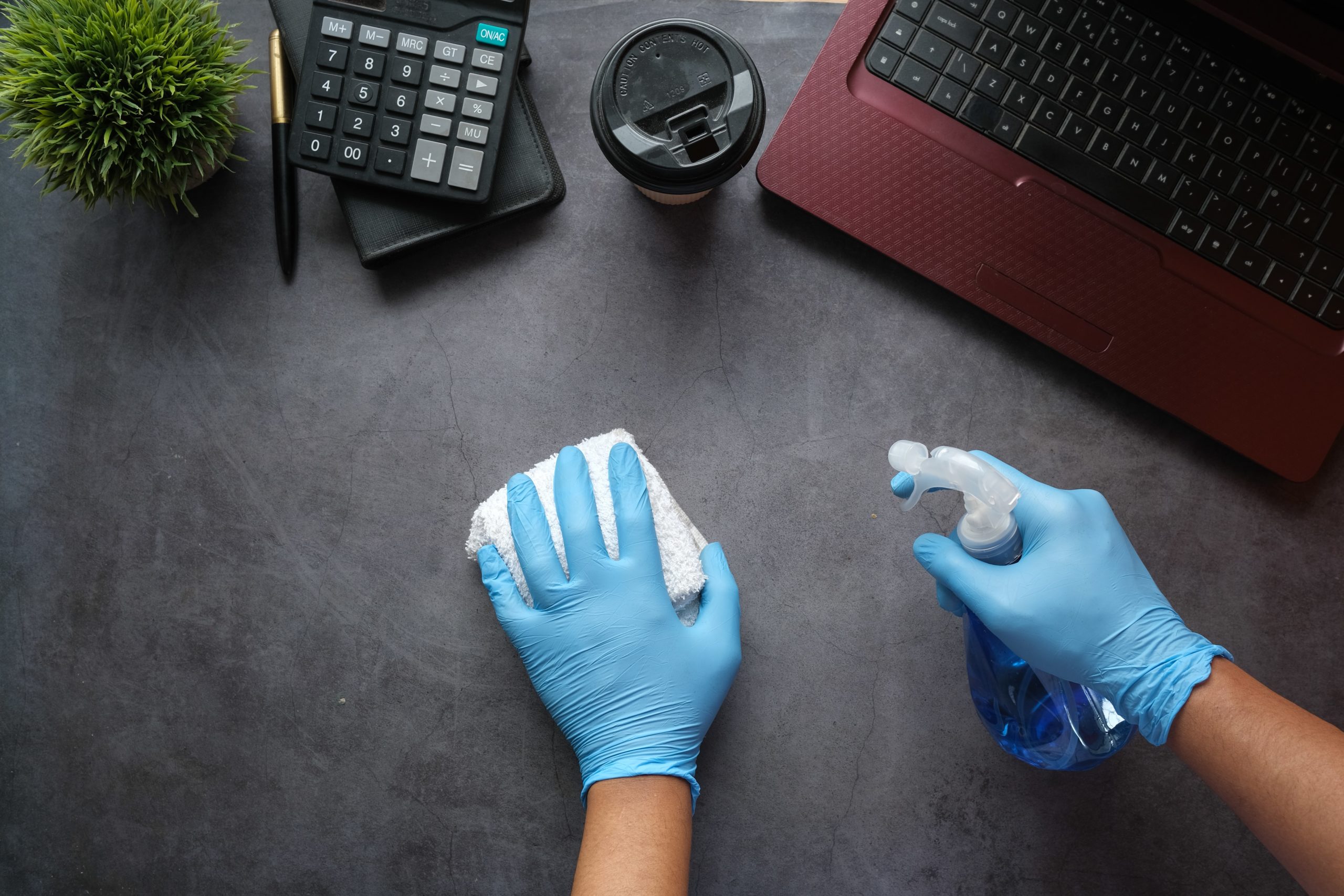5 Top Tech Solutions For Hybrid Companies
With over 50% of US workers working remotely at least once a week and tech solutions catching up quickly to meet the new challenges faced by modern businesses, hybrid workplaces... Read More

6 ways to save $$$ on your office space.
Learn more >August 18, 2022 | by
Reviewed by real estate expert Patrick Braswell
In the corporate world, appearance plays a significant role in how current and potential customers perceive your business. Appearance is not only about how your employees dress but also how organized and well-kept your office space is. An untidy office can reflect poorly on your brand, as well as negatively impact your employees’ health and productivity.
In order to maintain and clean offices effectively, businesses need to adopt a systematic approach. This can be done by either outsourcing an office cleaning agency or employing in-house office cleaners. That said, despite the rise in office cleaning agencies, a study revealed that 46.42 percent of facility managers surveyed do not consider outsourcing cleaning and janitorial services an option.
Looking to implement a structured office cleaning and maintenance schedule? In this article, we provide you with the ultimate office cleaning and maintenance checklist — plus a few tips and tricks for tidying your office space.
Creating an office cleaning and maintenance checklist is the first step to having a tidy and well-organized working environment. The ideal checklist should be divided into daily, weekly, monthly, and seasonal (or quarterly) cleaning tasks.
Daily cleaning and maintenance ensure that the office stays tidy, neat, and functional. This includes all areas of the office that require regular cleaning.
Daily tasks include:
Weekly cleaning and maintenance focuses on larger jobs and surfaces and is most effective when you plan a regular time to complete these tasks. It requires communication with colleagues to know what to expect and when. Tasks like emptying the refrigerator and deep cleaning can inconvenience employees and restrict their usage of the office space, so they should not come as a surprise!
Weekly cleaning tasks include:
Monthly cleaning and maintenance tasks focus on hard-to-reach areas involving larger undertakings.
Areas that require monthly cleaning include:
Quarterly cleaning tasks include:
Quarterly office cleaning also involves seasonal specialty tasks like cleaning the Heating, Ventilation, and Air Conditioning (HVAC) vents before the winter heating or the summer air conditioning season.
Cleaning frequency varies from one area to another within your office space. It also varies based on the size of your office space — bigger offices will usually be cleaned a bit more frequently due to a higher number of employees passing through. A well-defined and laid-out cleaning schedule can make all the difference between a drab, untidy office and a clean, healthy, and productive one.
Grouping cleaning tasks allows you to set up an efficient schedule that works for your cleaning team and ensures you cover all the areas in your office. Furthermore, you can identify and prioritize the areas that need frequent cleaning and assign duties and responsibilities accordingly.
To avoid interruptions in the workplace, make sure your office cleaning typically takes place after office hours. Noisy cleaning activities, such as loud vacuuming, can hurt productivity — and even be detrimental to sales if your employees are on the phone with clients.
However, doing all the cleaning tasks after hours may not be possible. Some workplaces, like manufacturing facilities, operate on a 24-hour basis. This is why it is critical to schedule and group cleaning tasks into daily, weekly, monthly, and quarterly duties.
Building a good relationship with your cleaning team, whether outsourced or in-house, is vital. To do this, communicate clearly and set defined roles, responsibilities, requirements, and priorities for them.
Floor plans can vary greatly from office to office. The first step is to orient your cleaning staff and get them familiar with your space. Plan for a walk-through, discuss areas that need special attention, agree on a task list, and create a final schedule.
It is also vital that you listen to their suggestions and views. If you are working with a cleaning agency, they could have more experience and expertise in relevant matters. Incorporate their opinions and create the cleaning schedule together.
Keep in mind that maintaining a clean office space does not end with creating a schedule. You should regularly follow up to see whether the program meets its goals. Meet with your cleaning team regularly to understand their challenges and see whether everyone is doing their part. Update the team on any special events or changes to the schedule that might require an updated schedule.
Cleaners’ Personal Protective Equipment (PPE) includes any unique clothing or items your cleaning team wears to minimize the exposure to hazards that could cause health issues and injuries.
PPE is essential in helping cleaning staff avoid potential hazards from cleaning supplies, such as bleach, or cleaning tasks, such as mopping slippery floors. The employer has to consider a form of protection in compliance with legislation and common-sense measures, such as providing gloves for those dealing with bleaches.

The general cleaning PPE includes:
Apart from PPE, you should also provide cleaning supplies, such as detergents, mops, bleaches, scrubbing brushes, and other items your staff needs to perform their duties effectively.
Effective maintenance planning is critical for any office space. Failure to conduct regular maintenance can result in substantial repair costs.
Offices should budget for a maintenance strategy that covers the following areas:
A tidy, clean, and well-organized office space is essential in creating the perfect first impression on your visitors. A clean, functioning office space works wonders for your brand and the overall well-being of your staff. However, you can only achieve this by creating an effective office cleaning and maintenance checklist!
SquareFoot is a new kind of commercial real estate company. Our easy-to-use technology and responsive team of real estate professionals delivers the most transparent, flexible experience in the market. Get in touch to start your search today.